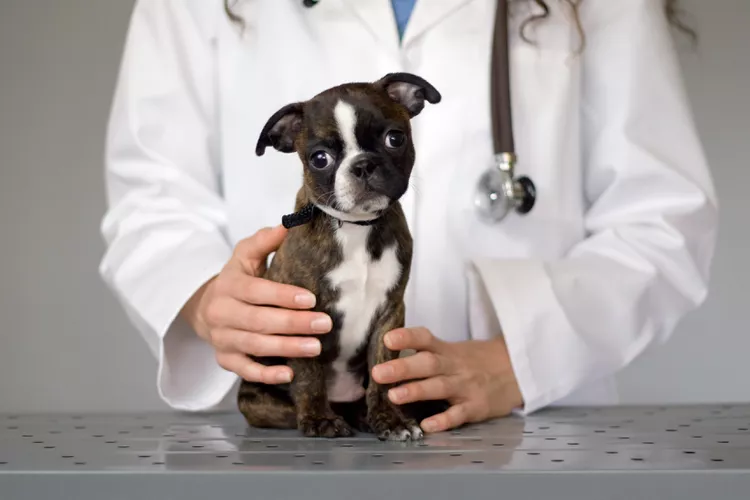Disinfecting Your Home After Parvovirus in Dogs

Parvovirus is a scary disease that typically affects unvaccinated puppies. It is highly contagious, so if your dog is diagnosed with this virus, you'll want to thoroughly disinfect your home before it returns.
What Is Parvovirus?
Canine parvovirus is a viral infection that causes severe gastrointestinal symptoms in dogs. It most commonly infects young puppies since they are not yet fully vaccinated, but it can also infect unvaccinated adult dogs that are exposed to it. It is passed between dogs orally, so a dog must ingest the microscopic virus to be infected. Once swallowed, the virus makes its way to the cells in the intestines, lymph nodes, and even the bone marrow.
Parvovirus may also be referred to as "parvo" and results in vomiting, bloody diarrhea, a decrease in activity, and a loss of appetite.
How Is Parvovirus Treated?
Treatments are varied depending on the severity of the symptoms and recommendations of the veterinarian evaluating the dog with parvo. IV fluids to prevent dehydration are most commonly used in addition to antibiotics to treat the secondary infection the virus allows. Probiotics, prebiotics, assisted feedings, vitamins, antinausea medications, dextrose, electrolytes, and other therapies may also be recommended by your veterinarian.
Dogs with parvo are often hospitalized to receive treatment, so it can become expensive to combat this disease. Survival rates are between 70 to 90 percent with immediate and proper treatment, but this infection is often fatal without treatment.
In 2023, Elanco's Canine Parvovirus Monoclonal Antibody became the first and only approved treatment specifically for parvo. The one-time injection binds to parvovirus and stops it from replicating in the body, which can help sick dogs feel better faster.
How Can You Prevent Parvovirus?
Following your veterinarian's recommendations to vaccinate your dog against parvovirus is the best thing you can do to prevent parvovirus. This will usually consist of multiple vaccinations spaced several weeks apart.
If your puppy or adult dog has not received all of its vaccines, keep it away from other dogs and environments that dogs frequent until it is fully vaccinated. This includes places like dog parks, pet stores, and groomers. If you had a dog with parvovirus prior to getting a new puppy, be sure to follow the recommended disinfection protocols in your home to prevent your puppy from being infected.
What Cleaners Kill Parvovirus?
Thankfully, there are cleaners that kill parvovirus in your home. Without proper disinfection, the virus can stay alive in the environment for up to three months, so you'll want to ensure you properly clean your dog's food and water bowls, bed, toys, and other things it may lick or put its mouth on.
The best thing you can use to kill parvovirus is a bleach solution. Mix one part bleach to 30 parts water and allow the item to be in contact with this solution for 10-15 minutes before thoroughly rinsing it off with water. Dishes and toys can be soaked in this solution and beds, stuffed animals, blankets, and other items that can be laundered can be put through the washing machine using hot water and bleach.
Other cleaners have also been shown to be effective in killing parvovirus but are not as inexpensive or readily available to pet owners as bleach. Wysiwash®, Bruclean®, Rescue®, and Trifectant® are just some of these products.
Outdoor areas should be thoroughly cleaned of all fecal matter and hosed down. Yards should then be allowed to dry out before another dog uses it. Sunlight and air drying does help limit the length of time the virus can survive. If you are able to obtain a product like Rescue®, you can also spray it onto where the dog with parvovirus frequented.
Tips to Disinfect Your Home After Parvovirus
If you are unable to clean an item with a cleaner that is known to kill parvovirus, then you are better off disposing of it than taking a chance that it could infect another dog. This is especially true for items that are likely to have fecal residue on them.
For large items like couches, rugs, or carpets, steam cleaners are good options even if a parvovirus killing cleaner is not able to be used. Just make sure you clean everything as thoroughly as possible, and allow it to dry before another dog uses it.
If you are still concerned that you may not have disinfected your home well enough to welcome an unvaccinated dog into it, wait one year to allow time for the virus to naturally die off.